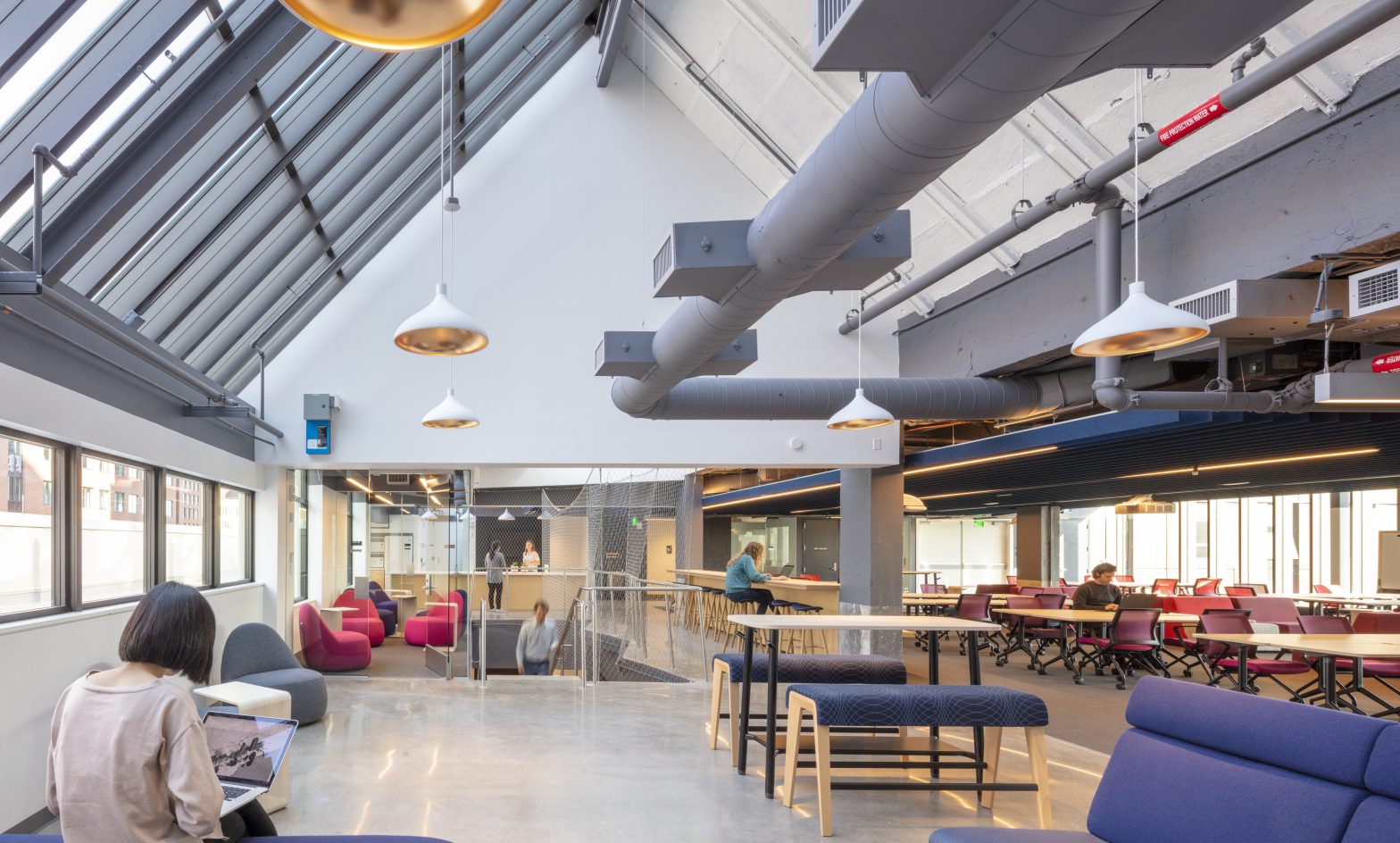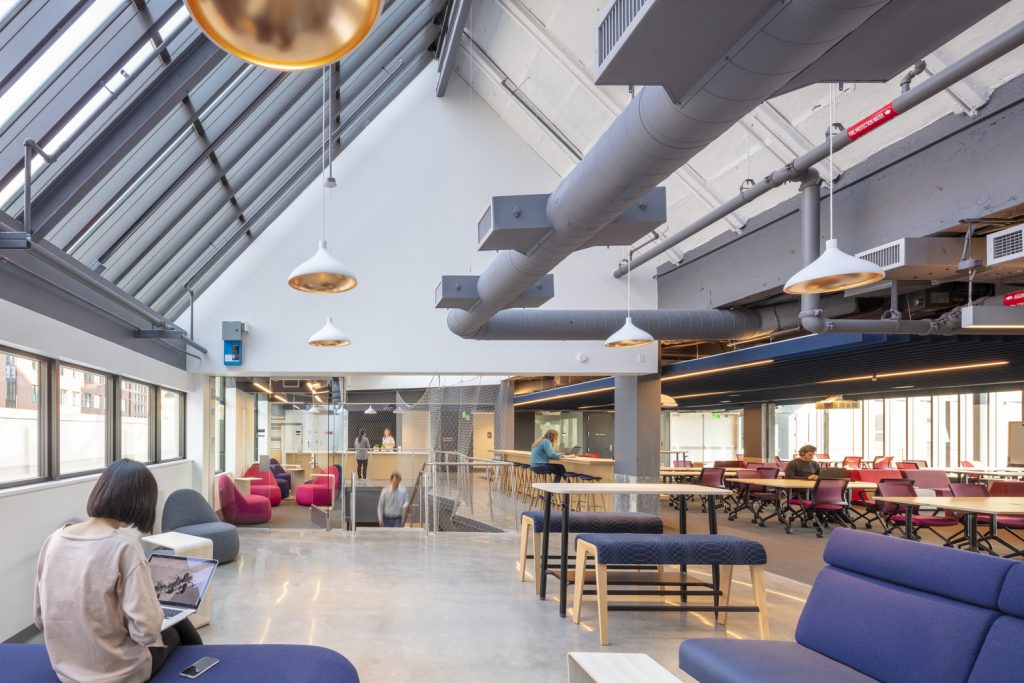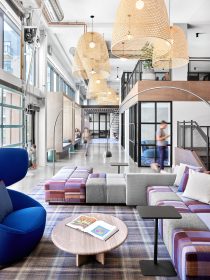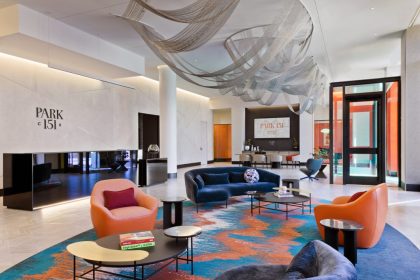
MIT Graduate Tower at Site 4
Location
Cambridge, MA
Completed
2021
Size
426,000 SF
Owners
Massachusetts Institute of Technology
Architect
NADAAA
PerkinsWill
Awards
2022 IES Illumination Boston Section Award – Honorable Mention
Photographer
© John Horner
Design Team
This new and adaptive reuse Academic Housing project is the first of several sites in this campus masterplan to grow its tech and life sciences presence. It was important for the University to provide diverse program typologies for all of its users – students, staff, and community at large. The project program includes graduate student housing, retail, office space, forum, lounges, childcare center, and an outdoor playscape.
The University upholds high standards for energy efficiency. It called on the lighting designers to present a design with a much-lower-than-average lighting power density. LEED Gold was the goal. We heard this directive loudly and clearly.
The open office workspaces are comfortably illuminated with individually circuited, direct/indirect pendants. Lumen packages were custom tailored with the lighting manufacturers to achieve the low light level targets. Strategic placement and a careful fixture selection process played critical roles in achieving the low lighting power density of 0.41 W/SF in the open office spaces.
At street level, the design goal was to create a unified nighttime aesthetic for all of the residential units, spread across many floors, with various multi-bedroom and living area layouts. In a collaborative team effort, the Architects, MEP and Structural Engineers pushed all the mechanical/HVAC requirements to the central spine of the tower, allowing for full-height ceilings at the perimeter. This detailed coordination primed the way for coves to indirectly illuminate the bedrooms and living rooms, providing visually comfortable and glare-free living spaces. The result is a gradient of light softly washing the ceilings, emanating from the tower’s central core.
As this is currently the City’s tallest building, it presented the challenge of crafting an image that would measure up to its impact and visibility — not only on campus, but also from neighboring Boston, across the Charles River.







